-
 Bitcoin
Bitcoin $107,631.9817
-1.73% -
 Ethereum
Ethereum $2,739.1787
-4.61% -
 Tether USDt
Tether USDt $1.0000
-0.01% -
 XRP
XRP $2.2427
-3.30% -
 BNB
BNB $664.0527
-0.73% -
 Solana
Solana $158.0902
-5.38% -
 USDC
USDC $0.9998
-0.01% -
 Dogecoin
Dogecoin $0.1876
-7.78% -
 TRON
TRON $0.2753
-3.21% -
 Cardano
Cardano $0.6820
-5.55% -
 Hyperliquid
Hyperliquid $43.0171
-0.38% -
 Sui
Sui $3.3308
-4.87% -
 Chainlink
Chainlink $14.3431
-7.89% -
 Avalanche
Avalanche $21.0266
-6.48% -
 Bitcoin Cash
Bitcoin Cash $437.7657
-1.56% -
 Stellar
Stellar $0.2746
-2.52% -
 UNUS SED LEO
UNUS SED LEO $8.8665
-1.96% -
 Toncoin
Toncoin $3.1885
-3.37% -
 Shiba Inu
Shiba Inu $0.0...01260
-6.84% -
 Hedera
Hedera $0.1686
-4.93% -
 Litecoin
Litecoin $88.8406
-5.16% -
 Polkadot
Polkadot $4.0542
-6.28% -
 Monero
Monero $322.5806
-4.20% -
 Ethena USDe
Ethena USDe $1.0004
-0.02% -
 Bitget Token
Bitget Token $4.7089
-3.10% -
 Dai
Dai $0.9998
-0.01% -
 Pepe
Pepe $0.0...01206
-9.06% -
 Uniswap
Uniswap $7.8694
-5.20% -
 Pi
Pi $0.6232
-2.68% -
 Aave
Aave $301.3815
-3.83%
How to use DMI in a decline rebound? Which DMI line to look at for an oversold rebound?
Use DMI to spot oversold rebounds: focus on declining -DI and ADX lines, confirm with RSI, and enter long positions cautiously with stop-loss orders.
Jun 08, 2025 at 10:56 pm
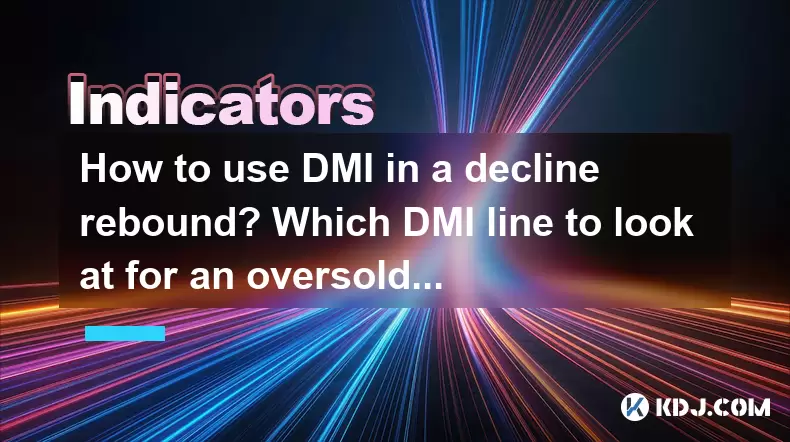
The Directional Movement Index (DMI) is a popular technical indicator used by traders to identify the strength of a trend and potential reversal points in the market. When it comes to using the DMI in a decline rebound scenario, it is crucial to understand how to interpret the different components of the DMI and which specific lines to focus on to identify an oversold rebound. This article will delve into the details of using the DMI effectively in such situations.
Understanding the Components of DMI
The DMI consists of three main lines: the Positive Directional Indicator (+DI), the Negative Directional Indicator (-DI), and the Average Directional Index (ADX). Each of these lines provides different insights into market trends and potential reversal points.
The +DI line represents the upward movement in the market and is calculated based on the difference between the current high and the previous high. When the +DI line is above the -DI line, it indicates a bullish trend.
The -DI line represents the downward movement in the market and is calculated based on the difference between the current low and the previous low. When the -DI line is above the +DI line, it indicates a bearish trend.
The ADX line measures the strength of the trend, regardless of its direction. A rising ADX line indicates a strengthening trend, while a falling ADX line indicates a weakening trend.
Identifying an Oversold Rebound Using DMI
When looking for an oversold rebound, the focus should be on the -DI line and the ADX line. These two lines provide crucial information about the strength of the downward trend and potential reversal points.
Monitoring the -DI line: The -DI line is particularly important in identifying an oversold condition. When the -DI line reaches extreme levels and starts to decline, it may signal that the bearish momentum is waning, and a potential rebound could be imminent.
Watching the ADX line: The ADX line helps in assessing the strength of the downward trend. If the ADX line is high and starts to decline while the -DI line is also declining, it suggests that the bearish trend is losing strength, increasing the likelihood of a rebound.
Steps to Use DMI for a Decline Rebound
To effectively use the DMI for identifying and trading a decline rebound, follow these detailed steps:
Open your trading platform: Ensure that you have a reliable trading platform that supports the DMI indicator. Most major platforms, including MetaTrader 4 and 5, TradingView, and others, have the DMI indicator available.
Add the DMI indicator to your chart: Navigate to the indicators section of your platform and select the DMI indicator. Apply it to the chart of the cryptocurrency you are interested in trading.
Set the parameters: The default settings for the DMI are usually 14 periods for both the +DI and -DI lines, and 14 periods for the ADX line. These settings can be adjusted based on your trading strategy, but the default settings are often effective for most traders.
Monitor the -DI line: Focus on the -DI line and observe its movement. Look for instances where the -DI line reaches a high level and then starts to decline. This could be an early sign of a potential rebound.
Check the ADX line: Simultaneously, monitor the ADX line. If the ADX line is also declining while the -DI line is falling, it strengthens the case for an impending rebound.
Confirm with other indicators: To increase the reliability of your analysis, consider using other technical indicators such as the Relative Strength Index (RSI) or the Stochastic Oscillator. These indicators can help confirm an oversold condition and potential rebound.
Enter the trade: Once you have identified a potential rebound based on the DMI and other confirming indicators, consider entering a long position. Place a stop-loss order below the recent low to manage risk.
Monitor the trade: After entering the trade, continue to monitor the DMI lines and other indicators to ensure that the rebound is progressing as expected. Adjust your stop-loss and take-profit levels as needed.
Using the -DI Line for an Oversold Rebound
The -DI line is the primary focus when looking for an oversold rebound. Here's a detailed explanation of how to use the -DI line effectively:
High -DI levels: When the -DI line reaches high levels (typically above 25 or 30), it indicates strong bearish momentum. However, when the -DI line starts to decline from these high levels, it suggests that the bearish pressure is diminishing.
Crossover with +DI: A potential signal for a rebound is when the -DI line crosses below the +DI line. This crossover can indicate a shift from a bearish to a bullish trend, signaling a potential rebound.
Divergence with price: Another important aspect to consider is divergence between the -DI line and the price action. If the price continues to make new lows while the -DI line fails to reach new highs, it can be a strong indication of an impending rebound.
Combining DMI with Other Indicators
While the DMI is a powerful tool on its own, combining it with other technical indicators can enhance your trading strategy. Here are some common indicators that work well with the DMI:
Relative Strength Index (RSI): The RSI is a momentum oscillator that measures the speed and change of price movements. When the RSI is in oversold territory (typically below 30) and starts to rise, it can confirm a potential rebound identified by the DMI.
Stochastic Oscillator: Similar to the RSI, the Stochastic Oscillator can help identify oversold conditions. A rising Stochastic Oscillator from oversold levels can confirm a potential rebound signaled by the DMI.
Moving Averages: Using moving averages can help identify the overall trend direction. A crossover of a short-term moving average above a long-term moving average can confirm a potential rebound identified by the DMI.
Practical Example of Using DMI for a Decline Rebound
To illustrate how to use the DMI for a decline rebound, consider the following example with Bitcoin (BTC):
Initial Setup: You have added the DMI indicator to your Bitcoin chart with the default settings (14 periods for +DI, -DI, and ADX).
Observing the -DI line: You notice that the -DI line has been rising and recently reached a high of 35, indicating strong bearish momentum.
Decline in -DI line: The -DI line starts to decline from this high level, suggesting that the bearish pressure is waning.
ADX line analysis: You also observe that the ADX line, which had been rising, is now starting to decline, indicating a weakening trend.
Confirming with RSI: You check the RSI, which is currently at 28, indicating an oversold condition. The RSI starts to rise, confirming the potential rebound.
Entering the trade: Based on these signals, you decide to enter a long position on Bitcoin. You place a stop-loss order just below the recent low to manage risk.
Monitoring the trade: You continue to monitor the DMI lines and the RSI to ensure that the rebound is progressing as expected. You adjust your stop-loss and take-profit levels as the trade develops.
Frequently Asked Questions
Q: Can the DMI be used effectively on different timeframes?
A: Yes, the DMI can be used effectively on various timeframes, from short-term charts like 1-minute or 5-minute charts to longer-term charts like daily or weekly charts. The key is to adjust the period settings of the DMI according to the timeframe you are trading. For shorter timeframes, you might use shorter periods (e.g., 7 or 10), while for longer timeframes, the default 14 periods are often suitable.
Q: How does the DMI perform in highly volatile markets?
A: In highly volatile markets, the DMI can still be a useful tool, but it is important to combine it with other indicators and risk management strategies. High volatility can lead to more frequent crossovers and false signals, so using additional confirmation from indicators like the RSI or Stochastic Oscillator can help filter out false signals.
Q: Is it necessary to use the ADX line when trading with the DMI?
A: While the ADX line is not mandatory, it provides valuable information about the strength of the trend. Using the ADX line can help you determine whether the trend is strong enough to warrant a trade. If the ADX line is below a certain threshold (e.g., 20), it might indicate a weak trend, suggesting that waiting for a stronger trend could be more beneficial.
Q: Can the DMI be used for short selling in a decline rebound scenario?
A: Yes, the DMI can be used for short selling as well. In a decline rebound scenario, if the -DI line is declining and the +DI line starts to rise, it could indicate a potential short-selling opportunity. However, it is crucial to use other confirming indicators and maintain strict risk management when short selling.
Disclaimer:info@kdj.com
The information provided is not trading advice. kdj.com does not assume any responsibility for any investments made based on the information provided in this article. Cryptocurrencies are highly volatile and it is highly recommended that you invest with caution after thorough research!
If you believe that the content used on this website infringes your copyright, please contact us immediately (info@kdj.com) and we will delete it promptly.
- The Bitcoin Treasury Strategy That's Reanimating Zombie Companies
- 2025-06-13 03:00:12
- BlockDAG (BDAG) Could Be the Next Biggest Altcoin as NBA Courtside Exposure Teases a Possible 2x Rally
- 2025-06-13 03:00:12
- Tether (USDT) Buys 32% Stake in Canada's Public Gold Royalty Firm Elemental Altus Royalties
- 2025-06-13 02:55:12
- Troller Cat Surges Past $225K in Presale as Dogwifhat Dips and FLOKI Gains
- 2025-06-13 02:55:12
- The graph (GRT), a key player in blockchain data indexing, has not seen a price pump yet.
- 2025-06-13 02:50:13
- Is This the Season Where Meme Coins Rewrite Crypto History Again?
- 2025-06-13 02:50:13
Related knowledge
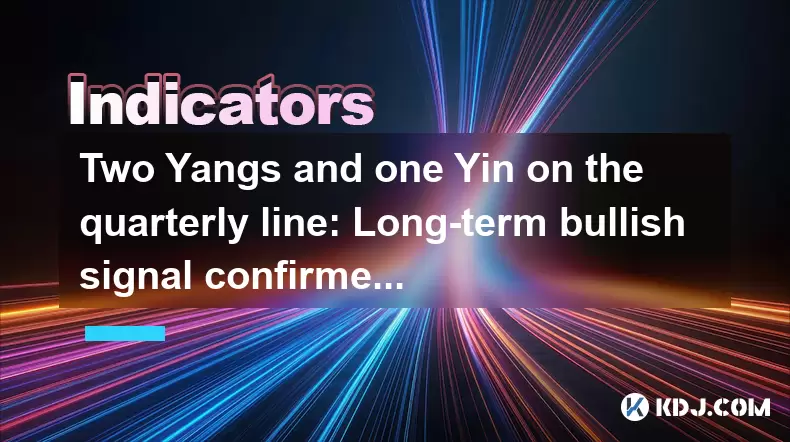
Two Yangs and one Yin on the quarterly line: Long-term bullish signal confirmed?
Jun 12,2025 at 07:00am
Understanding the 'Two Yangs and One Yin' Candlestick PatternIn technical analysis, candlestick patterns play a pivotal role in identifying potential market reversals or continuations. The 'Two Yangs and One Yin' pattern is one such formation that traders often observe on longer timeframes like the quarterly chart. This pattern consists of two bullish (...
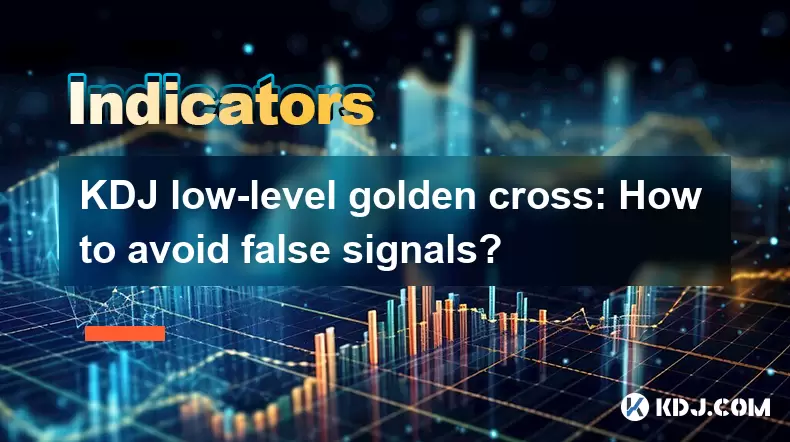
KDJ low-level golden cross: How to avoid false signals?
Jun 12,2025 at 08:21am
Understanding the KDJ IndicatorThe KDJ indicator, also known as the stochastic oscillator, is a momentum-based technical analysis tool widely used in cryptocurrency trading. It consists of three lines: the %K line (fast stochastic), the %D line (slow stochastic), and the %J line (divergence value). These lines oscillate between 0 and 100, helping trader...

Bottom-up volume stagnation: Is it accumulation or heavy selling pressure?
Jun 12,2025 at 01:42pm
What Is Bottom-Up Volume Stagnation?Bottom-up volume stagnation refers to a specific pattern observed in cryptocurrency trading charts where the price of an asset moves sideways or slightly downward, and trading volume remains consistently low over an extended period. This phenomenon is often seen after a sharp price drop or during a prolonged bear mark...
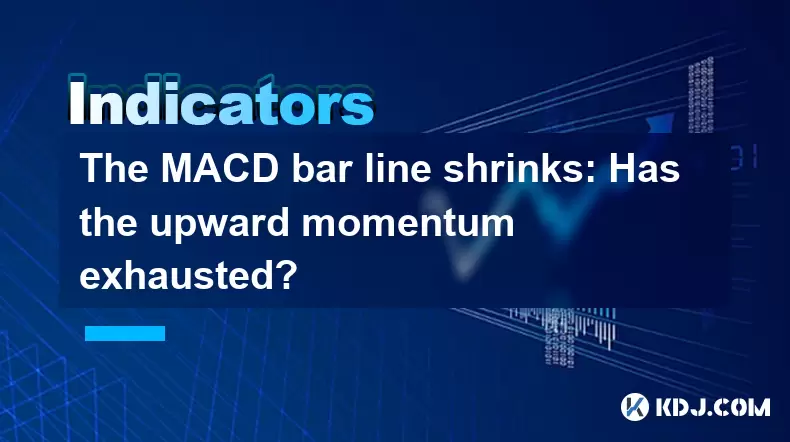
The MACD bar line shrinks: Has the upward momentum exhausted?
Jun 12,2025 at 12:49am
Understanding the MACD Bar LineThe Moving Average Convergence Divergence (MACD) is a widely used technical indicator in cryptocurrency trading. It consists of three main components: the MACD line, the signal line, and the MACD histogram (also known as the bar line). The MACD bar line represents the difference between the MACD line and the signal line. W...

The chip peak moves up: Is the main force quietly shipping?
Jun 12,2025 at 01:01am
Understanding the Chip Peak Movement in Cryptocurrency MiningIn recent years, the chip peak movement has become a critical topic within the cryptocurrency mining community. This phrase typically refers to the point at which mining hardware reaches its maximum efficiency and output capacity. When this peak shifts upward, it often signals changes in the s...
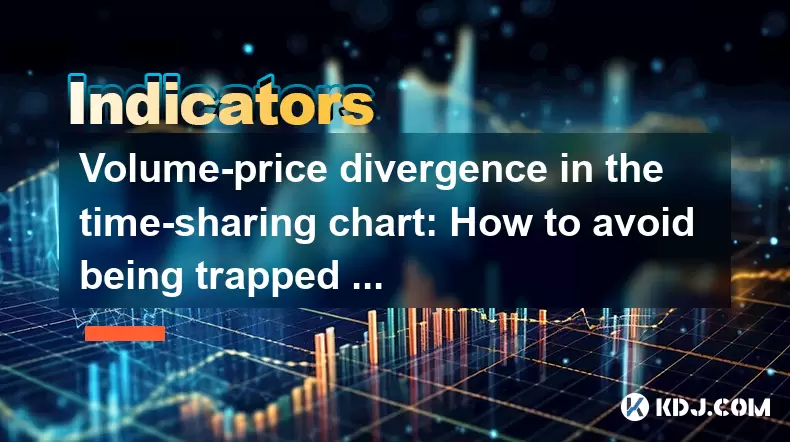
Volume-price divergence in the time-sharing chart: How to avoid being trapped on the same day?
Jun 12,2025 at 07:28pm
Understanding Volume-Price Divergence in Cryptocurrency TradingVolume-price divergence is a critical concept in technical analysis, especially within the fast-moving world of cryptocurrency trading. It refers to a situation where price movement and trading volume move in opposite directions. For instance, if the price of a cryptocurrency is rising while...

Two Yangs and one Yin on the quarterly line: Long-term bullish signal confirmed?
Jun 12,2025 at 07:00am
Understanding the 'Two Yangs and One Yin' Candlestick PatternIn technical analysis, candlestick patterns play a pivotal role in identifying potential market reversals or continuations. The 'Two Yangs and One Yin' pattern is one such formation that traders often observe on longer timeframes like the quarterly chart. This pattern consists of two bullish (...

KDJ low-level golden cross: How to avoid false signals?
Jun 12,2025 at 08:21am
Understanding the KDJ IndicatorThe KDJ indicator, also known as the stochastic oscillator, is a momentum-based technical analysis tool widely used in cryptocurrency trading. It consists of three lines: the %K line (fast stochastic), the %D line (slow stochastic), and the %J line (divergence value). These lines oscillate between 0 and 100, helping trader...

Bottom-up volume stagnation: Is it accumulation or heavy selling pressure?
Jun 12,2025 at 01:42pm
What Is Bottom-Up Volume Stagnation?Bottom-up volume stagnation refers to a specific pattern observed in cryptocurrency trading charts where the price of an asset moves sideways or slightly downward, and trading volume remains consistently low over an extended period. This phenomenon is often seen after a sharp price drop or during a prolonged bear mark...

The MACD bar line shrinks: Has the upward momentum exhausted?
Jun 12,2025 at 12:49am
Understanding the MACD Bar LineThe Moving Average Convergence Divergence (MACD) is a widely used technical indicator in cryptocurrency trading. It consists of three main components: the MACD line, the signal line, and the MACD histogram (also known as the bar line). The MACD bar line represents the difference between the MACD line and the signal line. W...

The chip peak moves up: Is the main force quietly shipping?
Jun 12,2025 at 01:01am
Understanding the Chip Peak Movement in Cryptocurrency MiningIn recent years, the chip peak movement has become a critical topic within the cryptocurrency mining community. This phrase typically refers to the point at which mining hardware reaches its maximum efficiency and output capacity. When this peak shifts upward, it often signals changes in the s...

Volume-price divergence in the time-sharing chart: How to avoid being trapped on the same day?
Jun 12,2025 at 07:28pm
Understanding Volume-Price Divergence in Cryptocurrency TradingVolume-price divergence is a critical concept in technical analysis, especially within the fast-moving world of cryptocurrency trading. It refers to a situation where price movement and trading volume move in opposite directions. For instance, if the price of a cryptocurrency is rising while...
See all articles

























































































